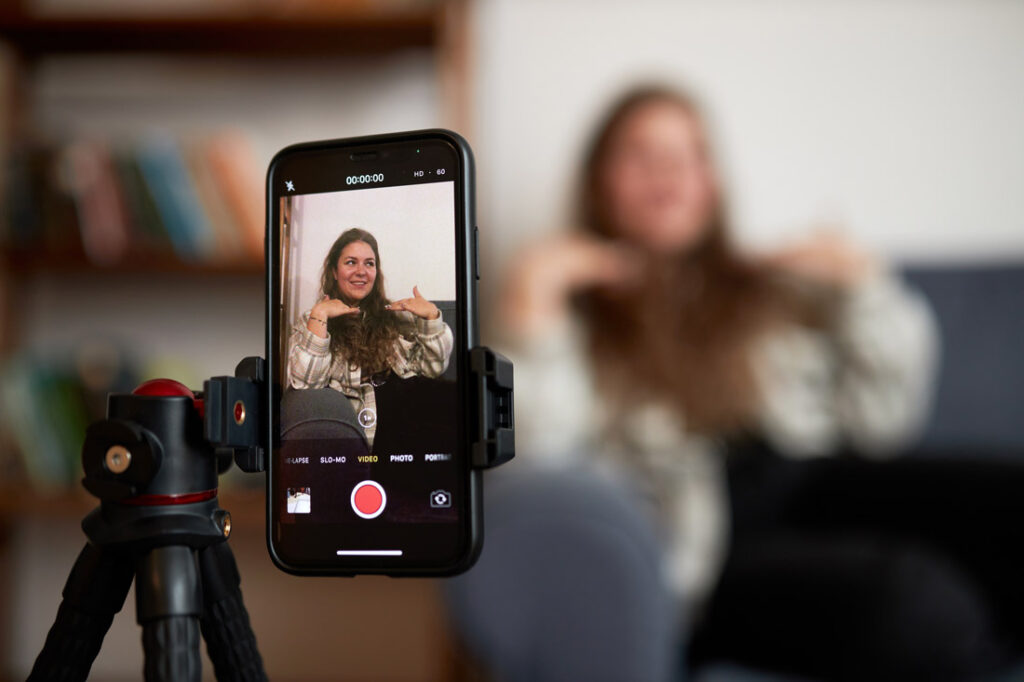LinkedIn is more buttoned-up and carefully curated than other social networking platforms tend to be. While we go to most social media sites to be entertained or catch up with loved ones, this prominently professional networking platform has staunchly remained as such. It’s a great place to catch up on career wins or meet people in your industry, but engagement on the platform can often feel inauthentic.
On LinkedIn, your job is to make yourself look good. This means that users often shy away from experimenting with different content types.
Last year, I worked with an executive who occasionally shoots video content with a communication firm. His usual content strategy is to post long videos explaining nuanced industry topics. I had suggested experimenting with short-form, vertical content with the argument that consumer preferences now gravitate toward authentic, user-generated content over polished advertising. He passed—but LinkedIn has now caught up with other social media platforms and added a vertical feed.
A scrolling video feed may just change how we present ourselves on LinkedIn and will perhaps add some levity to a social media platform that has a reputation for being stuffy.
Vertical video: A trendsetter in digital media
LinkedIn has been around slightly longer than Facebook but is one of the last big social media platforms to adopt the standard vertical video format. You probably think of TikTok first, but Snapchat was at the forefront of the shift to a vertical viewing experience in 2011. TikTok popularized the format further after first launching in 2016, and Facebook followed with the addition of stories in 2017.

We now consume most of our internet content on our phones. A Pew Research Center study found that smartphone ownership increased from 35% in 2011 to 90% as of early 2024. Additionally, 15% of U.S. adults are “smartphone only” internet users, meaning that they don’t use a computer to access the web.
Social media platforms earn most of their money from advertisers. Because of this, these platforms are designed to keep us on the app for as long as possible. Endless video feeds are part of what makes social media so addictive, and presenting the content vertically adds an immersive element that keeps us scrolling indefinitely.
The creators who are already here
How will vertical videos change how we behave on LinkedIn?
A cursory scroll of my own LinkedIn video feed brought me comedy videos, a “salary hack” strategy and a video with “Get Low” by Lil Jon & The East Side Boyz playing in the background. Creators have already begun to use the platform to poke fun at work culture.
Eliza VanCort, an author, speaker and consultant who publishes regular video content to TikTok, Instagram and Facebook, agrees that LinkedIn will experience a cultural shift, especially since vertical videos provide a content creation alternative to the long-form articles that the platform is known for.
“There’s no question that the culture will change—and for some people, that change is going to be quite welcome,” VanCort says. “Because obviously, when you start putting out this kind of video content, you’re going to have a more relaxed vibe…. [We’re] entering into the 24-hour news cycle on LinkedIn.”
Jonathan Greye, a partner and the chief branding officer at PersonalBrand.com, argues that while it’s still important to build your personal brand on LinkedIn, the new content format will allow users to rethink what that means.
“You have to first unbrand yourself before you start branding yourself,” Greye says. “We’re just so inundated by information, and we kind of get lost in it. And during our process, that unearthing process, it’s so important to strip away and to really build from… your personal truth and then [create] a brand around that.”
A new path to visibility
New thought leaders will likely gain visibility in a saturated market by becoming early adopters of the new video feed. The most important aspect of this shift will be understanding what content to release.
VanCort recommends creating list-based content. “[This] holds true more on LinkedIn than any other app,” she says. “People tolerate stories on Instagram and TikTok, but on LinkedIn, people like ‘Five things you can do to change this [or] to help your business.’”
Overall, if you promote your business on LinkedIn, it’s prudent to adapt to the new format—and perhaps loosen your buttons a bit as well.
Photo by Anatoliy Karlyuk/Shutterstock.com










